Plans to replace a 1930s house in Dartmouth Park with a block of flats have sparked local objections, including from Dame Justine Thornton and actor Benedict Cumberbatch
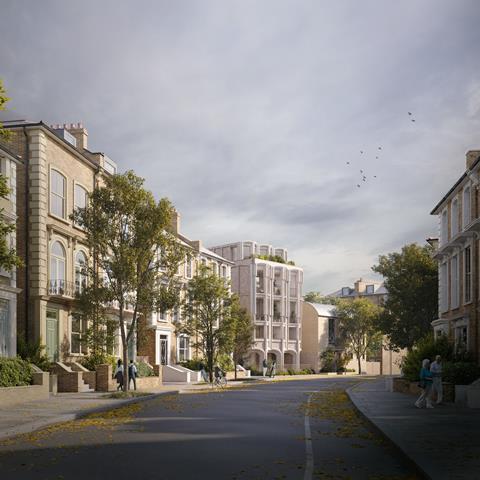
A proposal by Bureau de Change Architects to redevelop a single-family home in Dartmouth Park, Camden, into a five-storey block of flats has drawn national attention, including opposition from Dame Justine Thornton, a barrister and judge, who is also wife of energy secretary Ed Miliband.
The project, submitted for developer HGG London, would see the demolition of a 1930s detached house on Dartmouth Park Road, located in the Highgate ward of the London borough, and its replacement with six apartments ranging from one to three bedrooms. The proposal seeks to increase the site’s density while referencing local Victorian architecture in its massing and façade design.
In its design and access statement, Bureau de Change describes the proposal as a “sensitive and site-driven design” that aims to deliver “much needed new housing for the area”. The site sits within the Dartmouth Park Conservation Area.
Thornton wrote that the proposed block was “too tall, too bulky and too dense for its plot given the context of the surrounding houses and the wider conservation area”.
While expressing support for additional housing in principle, she cited the nearby Highgate Newtown residential development as “a brilliant example of thoughtful design in harmony with neighbouring properties” and suggested that the application represented “another opportunity for the Council to demonstrate its commitment to the provision of sympathetically designed housing by acknowledging the benefit of redevelopment whilst rejecting this particular design”.
The project has highlighted the ongoing tension between national planning policy objectives and local resistance to change. The Labour government has made housing delivery a key part of its growth agenda, pledging to prioritise brownfield development and to take a more assertive stance against anti-development sentiment.
Architects Joanna van Heyningen and Birkin Haward, founding partners of van Heyningen and Haward Architects, also submitted a formal objection to the scheme. In their response, they stated that the proposal was “too tall for its context, too deep, too close to the houses to its south and east, provides poor living standards for its intended inhabitants, and ignores the requirement for bio-diversity net gain”.
Referring to the design, they described the illustrated façade as “a naïve architectural response that attempts to be contextual by aping some of the proportions of neighbouring buildings, whilst completely failing to respect them”.
Actor Benedict Cumberbatch and his wife, theatre director and playwright Sophie Hunter, who also live nearby, submitted their own objection. They argued that the scheme would be “out of keeping with the architectural style of the area” and warned it would “disrupt the aesthetic of the street” and be “directly in opposition to the nature of a conservation area”.
They also expressed concerns about the impact on privacy and daylight, writing that the proposed building “will dwarf houses on both roads” and “look directly onto adjacent properties and gardens”. The objection concluded by cautioning that approval could “set a precedent for the area”, asking: “Could I now demolish my property and replace it with flats and not require the same extensive planning approval?”
Bureau de Change Architects co-founder Billy Mavropoulos responded to the objections, stating: “We are proud of the design for Lamorna… which we believe complements and enhances the local neighbourhood of Dartmouth Park. Following extensive dialogue with planning officers at Camden Council we have developed the scheme to adhere to planning policy at local and national level, and have received the support of the independent Design Review Panel.
“As you can clearly see from the street elevation, the resulting design respects the massing and heights of the adjacent Victorian street frontage and sits well below the height of the tallest building. Our design revitalises an underutilised brownfield site and delivers much-needed new homes.”
Camden Council is yet to decide on the application.


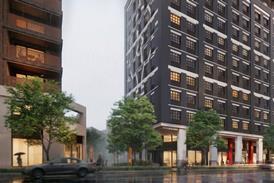
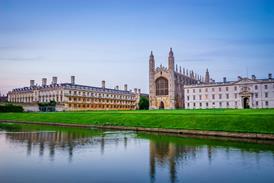

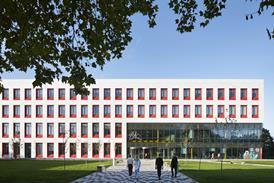



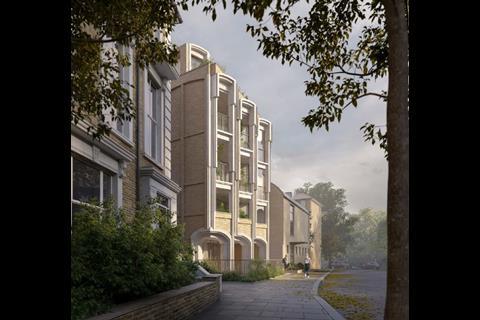











No comments yet